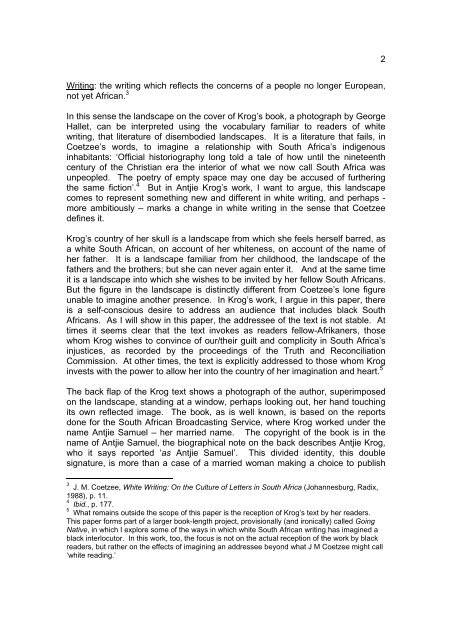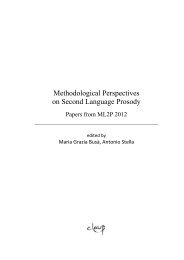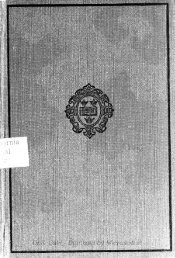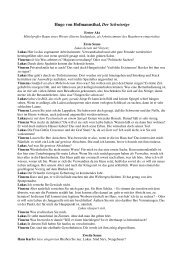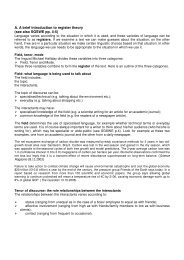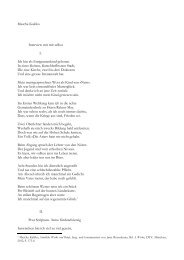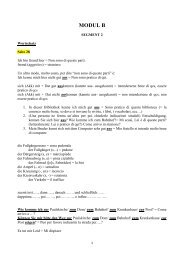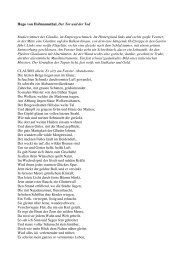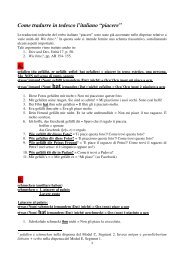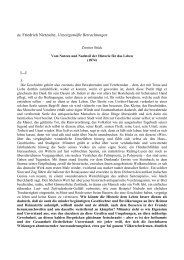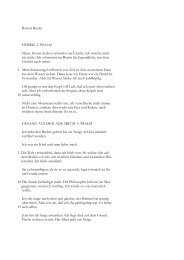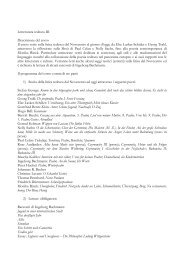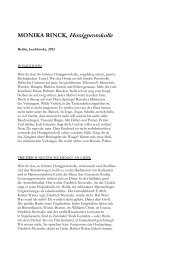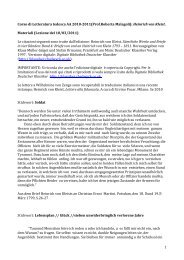1 They Never Wept, the Men of my Race: Antjie Krog's Country of my ...
1 They Never Wept, the Men of my Race: Antjie Krog's Country of my ...
1 They Never Wept, the Men of my Race: Antjie Krog's Country of my ...
You also want an ePaper? Increase the reach of your titles
YUMPU automatically turns print PDFs into web optimized ePapers that Google loves.
2<br />
Writing: <strong>the</strong> writing which reflects <strong>the</strong> concerns <strong>of</strong> a people no longer European,<br />
not yet African. 3<br />
In this sense <strong>the</strong> landscape on <strong>the</strong> cover <strong>of</strong> Krog’s book, a photograph by George<br />
Hallet, can be interpreted using <strong>the</strong> vocabulary familiar to readers <strong>of</strong> white<br />
writing, that literature <strong>of</strong> disembodied landscapes. It is a literature that fails, in<br />
Coetzee’s words, to imagine a relationship with South Africa’s indigenous<br />
inhabitants: ‘Official historiography long told a tale <strong>of</strong> how until <strong>the</strong> nineteenth<br />
century <strong>of</strong> <strong>the</strong> Christian era <strong>the</strong> interior <strong>of</strong> what we now call South Africa was<br />
unpeopled. The poetry <strong>of</strong> empty space may one day be accused <strong>of</strong> fur<strong>the</strong>ring<br />
<strong>the</strong> same fiction’. 4 But in <strong>Antjie</strong> Krog’s work, I want to argue, this landscape<br />
comes to represent something new and different in white writing, and perhaps -<br />
more ambitiously – marks a change in white writing in <strong>the</strong> sense that Coetzee<br />
defines it.<br />
Krog’s country <strong>of</strong> her skull is a landscape from which she feels herself barred, as<br />
a white South African, on account <strong>of</strong> her whiteness, on account <strong>of</strong> <strong>the</strong> name <strong>of</strong><br />
her fa<strong>the</strong>r. It is a landscape familiar from her childhood, <strong>the</strong> landscape <strong>of</strong> <strong>the</strong><br />
fa<strong>the</strong>rs and <strong>the</strong> bro<strong>the</strong>rs; but she can never again enter it. And at <strong>the</strong> same time<br />
it is a landscape into which she wishes to be invited by her fellow South Africans.<br />
But <strong>the</strong> figure in <strong>the</strong> landscape is distinctly different from Coetzee’s lone figure<br />
unable to imagine ano<strong>the</strong>r presence. In Krog’s work, I argue in this paper, <strong>the</strong>re<br />
is a self-conscious desire to address an audience that includes black South<br />
Africans. As I will show in this paper, <strong>the</strong> addressee <strong>of</strong> <strong>the</strong> text is not stable. At<br />
times it seems clear that <strong>the</strong> text invokes as readers fellow-Afrikaners, those<br />
whom Krog wishes to convince <strong>of</strong> our/<strong>the</strong>ir guilt and complicity in South Africa’s<br />
injustices, as recorded by <strong>the</strong> proceedings <strong>of</strong> <strong>the</strong> Truth and Reconciliation<br />
Commission. At o<strong>the</strong>r times, <strong>the</strong> text is explicitly addressed to those whom Krog<br />
invests with <strong>the</strong> power to allow her into <strong>the</strong> country <strong>of</strong> her imagination and heart. 5<br />
The back flap <strong>of</strong> <strong>the</strong> Krog text shows a photograph <strong>of</strong> <strong>the</strong> author, superimposed<br />
on <strong>the</strong> landscape, standing at a window, perhaps looking out, her hand touching<br />
its own reflected image. The book, as is well known, is based on <strong>the</strong> reports<br />
done for <strong>the</strong> South African Broadcasting Service, where Krog worked under <strong>the</strong><br />
name <strong>Antjie</strong> Samuel – her married name. The copyright <strong>of</strong> <strong>the</strong> book is in <strong>the</strong><br />
name <strong>of</strong> <strong>Antjie</strong> Samuel, <strong>the</strong> biographical note on <strong>the</strong> back describes <strong>Antjie</strong> Krog,<br />
who it says reported ‘as <strong>Antjie</strong> Samuel’. This divided identity, this double<br />
signature, is more than a case <strong>of</strong> a married woman making a choice to publish<br />
3 J. M. Coetzee, White Writing: On <strong>the</strong> Culture <strong>of</strong> Letters in South Africa (Johannesburg, Radix,<br />
1988), p. 11.<br />
4 Ibid., p. 177.<br />
5 What remains outside <strong>the</strong> scope <strong>of</strong> this paper is <strong>the</strong> reception <strong>of</strong> Krog’s text by her readers.<br />
This paper forms part <strong>of</strong> a larger book-length project, provisionally (and ironically) called Going<br />
Native, in which I explore some <strong>of</strong> <strong>the</strong> ways in which white South African writing has imagined a<br />
black interlocutor. In this work, too, <strong>the</strong> focus is not on <strong>the</strong> actual reception <strong>of</strong> <strong>the</strong> work by black<br />
readers, but ra<strong>the</strong>r on <strong>the</strong> effects <strong>of</strong> imagining an addressee beyond what J M Coetzee might call<br />
‘white reading.’


